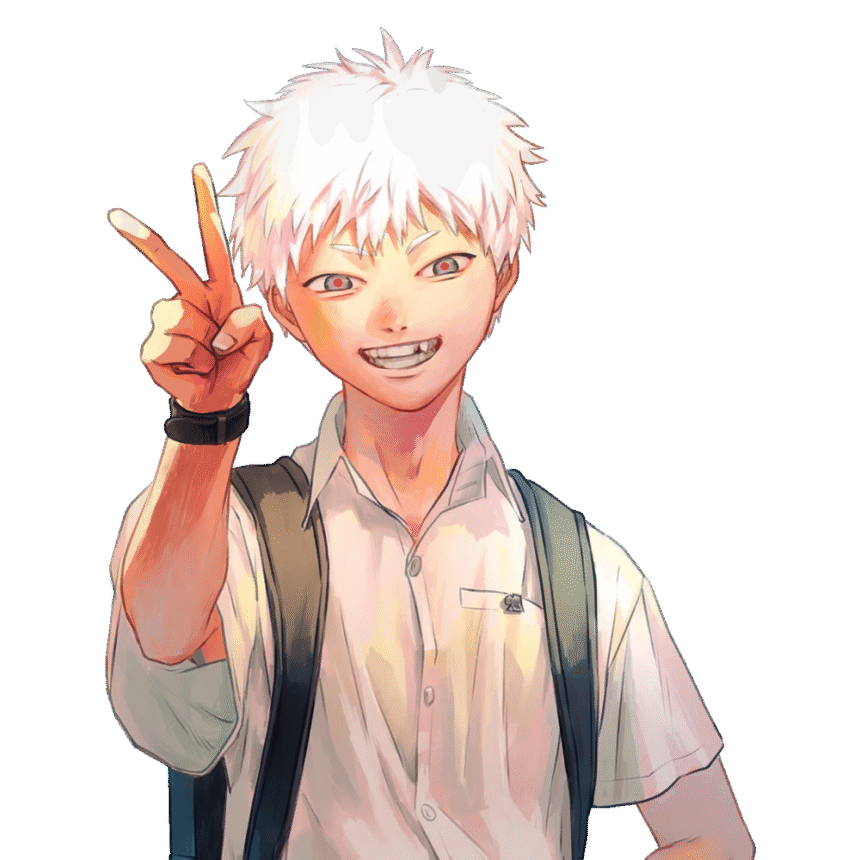2025 may be the start of a trend of queer supernatural anime — and after a rocky start with the bloodless Baban Baban Ban Vampire, we have a new entry in the form of The Summer Hikaru Died.
That being said, there is not much shared between their lineage, aside from their both drawing story elements from the uncanny: one is about vampires, the other, the unknown. Additionally, while The Summer Hikaru Died has not yet concluded its first season, another difference is clear: it’s actually good.
Be warned: this set of impressions of the first quarter of the series will include some spoilers, not only of the premise, but of events that happen early in the series.
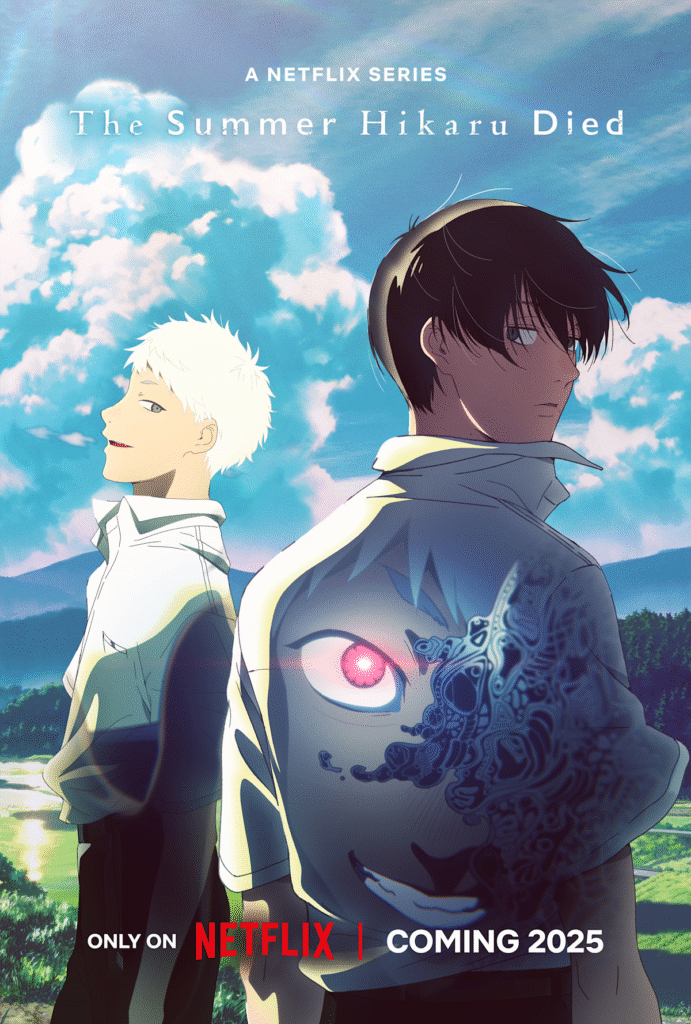
Premise
This is a fairly high-concept anime, to begin with. The premise is that the protagonist, Yoshiki Tsujinaka, is best friends with Hikaru Indo, whom he has known since he was a child in their rual mountain town. We open the series with the two of them interacting, Hikaru joyful and jovial. But Yoshiki, though always the more reserved of the two, doesn’t share in this happiness, even below the surface. He seems unsettled, because although this person looks like Hikaru, walks like Hikaru, and talks like Hikaru… he can tell: it isn’t Hikaru.
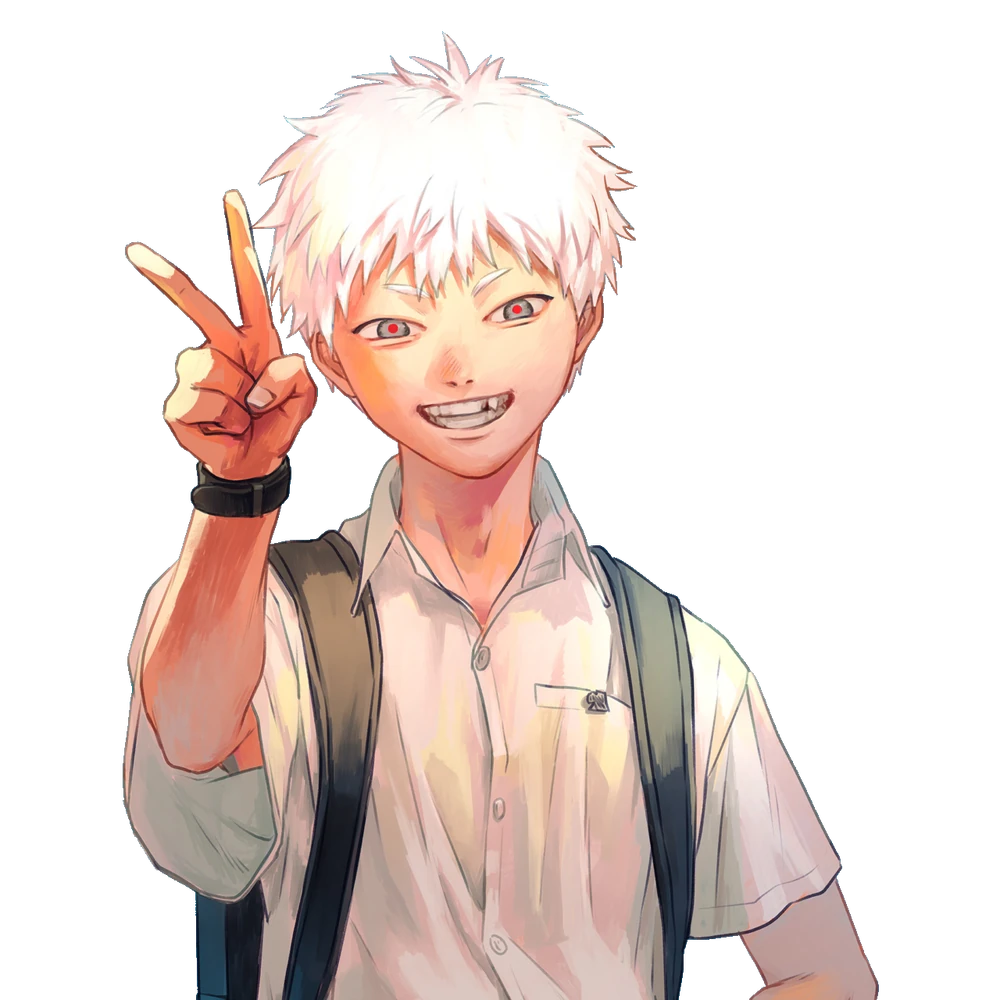
We only see Hikaru in flashbacks in the show. The name of the anime is no bluff: Hikaru is dead. However, he died on a haunted mountain, and as he breathed his last, a ghostly being, whose true nature is unknown even to itself (or at least, that’s all we can go on for now) inhabited Hikaru’s body, restoring it to life: but with said specter in place of his soul.
This “Hikaru” has all the memories of the original. It knows what Hikaru likes, what Hikaru dislikes, how he acts, and how he converses, but Yoshiki is so close to him that he can tell… something isn’t right.
The inhabitant of Hikaru’s body confirms, when confronted: no, he is not Hikaru. Hikaru is dead, and he is never coming back. But it knows what Yoshiki was to Hikaru, and it feels the same way. That’s why it wants to stay close to Yoshiki, because it feels for him what Hikaru did. And it’s the reason that Yoshiki, at least at the start, wants it to stay. Because he can’t let Hikaru go. We’ll get more into this in just a second.
As the episodes have progressed, however, it seems that whatever it is that is wearing Hikaru’s form coming down from the mountain has begun to unleash more chaotic forces from those peaks. And at least some elders of the small mountain town know what has been unleashed — and what they angered years ago: Lord Nonuki.
Is this BL or Horror?
In the first place, being a BL anime and a horror anime are not incompatible. After all, an anime can be romance and sci-fi, or a period piece and action. However, perhaps due to the depth of the relationship displayed by Yoshiki and “Hikaru” in the original manga, many have considered it to be BL, while others insist that instead, it’s purely horror.
The manga author themselves, who writes under the psudonym Mokumokuren (the name of a Japanese monster with many eyes), has said that they want it to be considered a “youth horror,” but the primary theme will resonate to anyone who has felt like they are different — and especially if they are queer — who has lived in a small town.
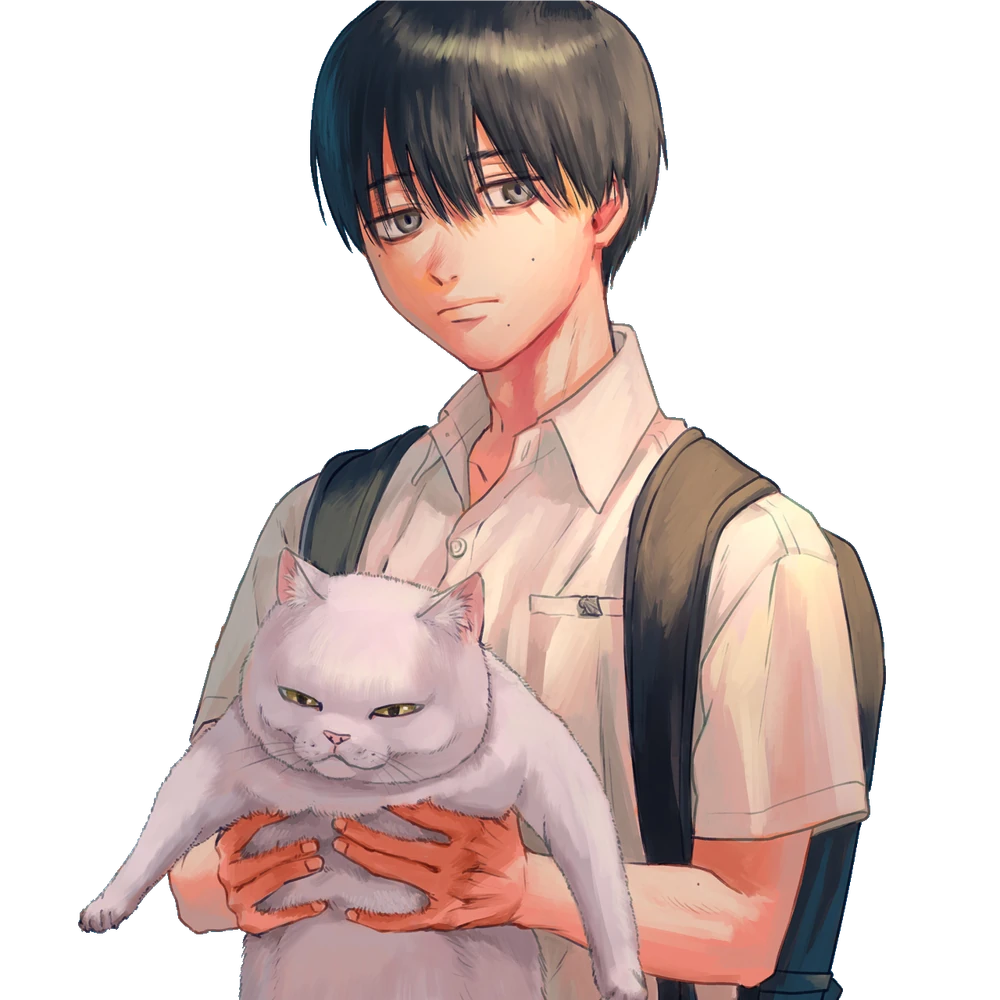
“I believe it should be a story that sympathizes with people who have been left out of conversations about romance and sex, so I describe it as ‘youth horror,’” Mokumokuren says. “I think the key is the fear of not being able to be ‘normal’ and having no place to belong, which is something that many people share.”
But it is undeniable that, even in these opening episodes, there’s something… there, isn’t there? The way “Hikaru” clings to Yoshiki, the way Yoshiki cannot let Hikaru go, even as he becomes increasingly aware that this entity that wears his friend’s life is never going to be a substitute for the real thing.
It might be most apt to consider it to be a horror manga viewed through a queer lens, as others have said. So, without further do, let’s discuss how these blend so well.
Horror and Eroticism
Fear, flesh, and fantasy have long been intertwined, and The Summer Hikaru Died weaves these together masterfully. In addition to the growing fear of the Hikaru-shaped thing in his midst, Yoshiki is incapable of turning away from it: especially as it is telling him all the things he wished that Hikaru had said when he was alive. The faux-Hikaru is not just doting, however, but exceedingly protective, promising that, even if it could, it would never kill Yoshiki, and kills spirits that threaten him.
The clearest merging of these, however, are when the Hikaru Thing brings Yoshiki alone to an empty gym room (even remarking, “what would people think?”, as it removes its shirt). It proceeds to inhumanely opens its entire chest, pulling Yoshiki’s hand, and then his arm, and then nearly his entire body into itself, all while describing how good it feels.
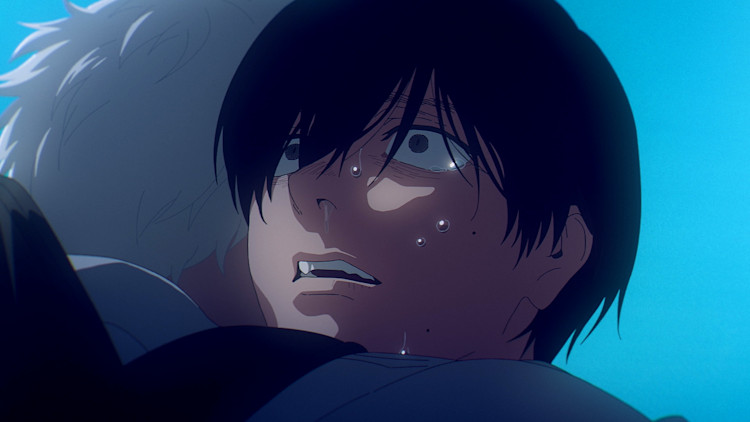
Later, Yoshiki, wracked with indecision, snaps at Not-Hikaru and tells him to go home alone. This makes the creature lose its patience, expand beyond Hikaru’s body, and in a twisting nightmare of eyes and crawling movement, invades Yoshiki’s body. Yoshiki is disgusted… until he isn’t. Towards the end, before a flash-cut that sets him free, he even feels pleasure in being overtaken.
Scenes like these can be deeply uncomfortable to watch: and that’s the point. Fans of horror or the macabre may have seen similar things elsewhere, but for currently airing unsettling sexual psycho-horror, there are no substitutes I can think of.
My Thoughts
After the first few episodes, I am firmly convinced that this is a series that will be worth following until the end. The art is excellent, with the contrast between “Hikaru” and other characters is subtly different, but not especially pronounced (unless he is using his “true power”), a compelling choice. Indeed, many of the shots and animation have a quiet unnaturalness to them that adds to a compelling sense of dread. The “camera” lingers on faces, fingers, eyes, trees, space, just long enough to make you think, “shouldn’t we be looking at something else now?”
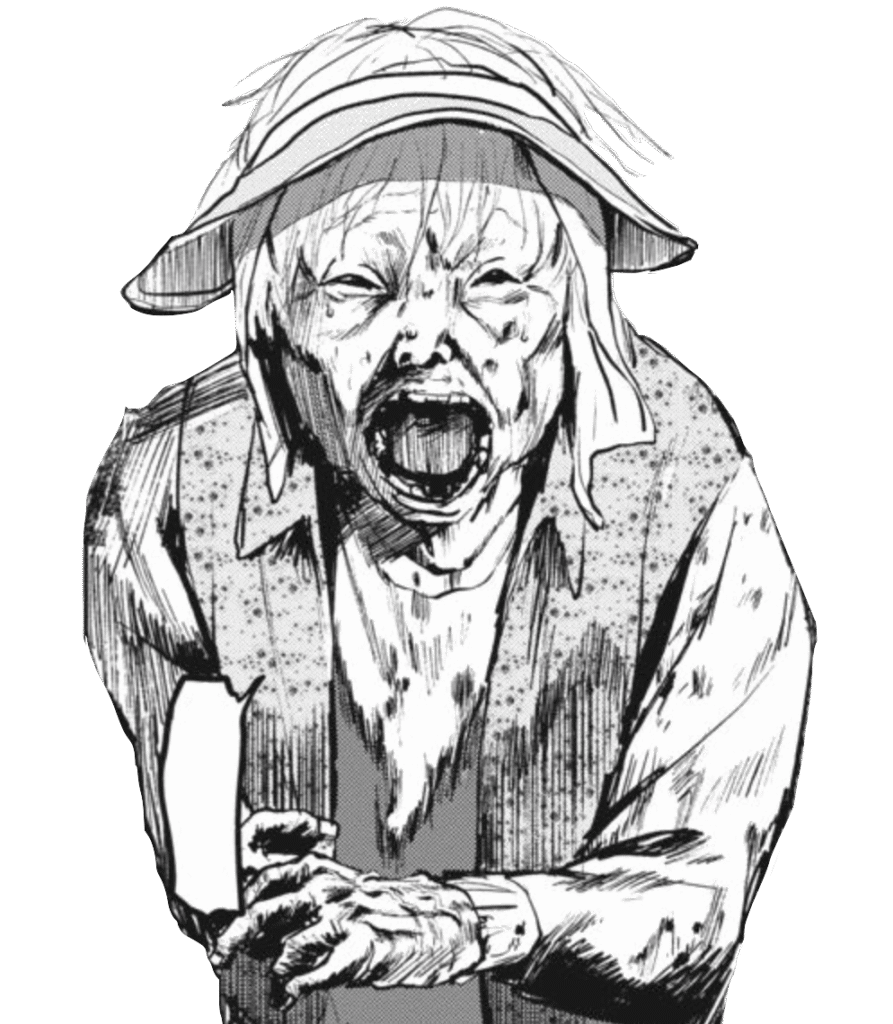
The music, while not intrusive, adds to the creeping sense of unease, and the OP and ED songs are impressive. The voice actors too, especially Yoshiki’s Chiaki Kobayashi and Hikaru’s Shuichiro Umeda put in excellent work, with Kobayashi exemplifying horrified need and Hikaru a devoted threat.
The series is not yet complete, but it is deeply compelling. While it might not be a traditional BL anime, there is little else airing now like it, and its themes will appeal to many LGBTQ+ people who have experienced feelings of confusion, disassociation and alienation. I would recommend this as the premier BL anime of 2025 — and certainly the best supernatural BL of the year.

